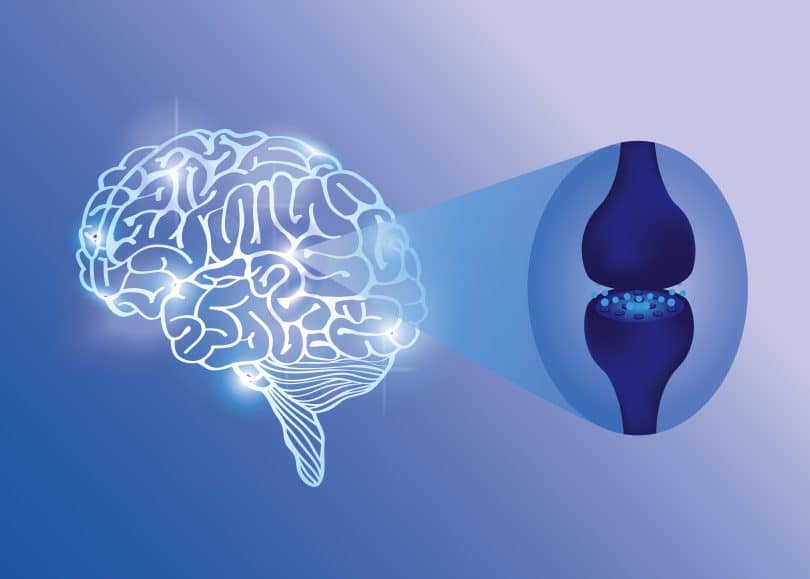Endocannabinoids are endogenous cannabinoids produced by the human body. They are part of the endocannabinoid system and are produced in response to stimulation from neurotransmitters. The most well-known endocannabinoids are anandamide (AEA) and 2-arachidonyl glycerol (2-AG) though there are more, each with its own job and physiological effect. Endogenous cannabinoids are fundamental to overall human health.
The ECS develops in the body shortly after conception, and plays an integral role in brain development during infancy, and a key role in brain health throughout life. They affect the function of everything from mood, energy, perception and hunger to immunity and more. In short, they are essential for overall health.
How do endogenous cannabinoids work?
Endogenous cannabinoids are part of the human body’s endocannabinoid system (ECS). Due to the presence of cannabinoid receptors, CB1 and CB2, throughout the body, and the way the ECS interacts with other systems such as nervous, immune and digestive systems, it regulates many physiological functions. The two main endogenous cannabinoids – part of an ever-growing family of bioactive lipids – are anandamide (EAE) and 2-arachidonyl glycerol (2-AG). They are released from nerve cells, which contain presynaptic neurons and postsynaptic neurons. Presynaptic neurons contain bundles of neurotransmitters or chemicals.
When stimulated (by a thought, desire to move, hunger, etc.), the relevant neurotransmitters are released to fuse with cells in a gap (synaptic cleft) in between the pre- and postsynaptic neurons, and park in receptors on the postsynaptic neuron side. The parking of the neurotransmitters provokes the cell to release further neurotransmitters (known as excitation) or to quiet down (known as inhibition.) The key thing to know about endogenous cannabinoids is that they’re released from the postsynaptic side, and in this instance, the neurotransmitters or chemicals work backwards, or in retrograde, and affect the presynaptic nerve by changing its ability to release further chemicals.
Put simply, endogenous cannabinoids decrease the probability that a neuron will release neurotransmitters, making them a way of shutting down communication between neurons. In fact, they work in a number of different ways that affect the communication between pre- and postsynaptic nerves, either upping or depressing the crosstalk between the synapses. For example, they can increase neuronal communication leading to an increase in mood, and visa versa. They have similar effects on energy levels, memory, perception, inflammation, libido, hunger, and so on, with the ability to excite or inhibit these physiological reactions. But their effects are very nuanced, and depend on context as well as many other factors.
The family of endocannabinoids includes the following:
- N-arachidonoylethanolamine (Anandamide/AEA)
- 2-arachidonyl glycerol (2-AG)
- N-arachidonlyldopamine
- 2-arachidonoylglycerylether (noladin ether)
- O-arachidonoylethanolaimin (virodhamine)
- N-docosahexaenoylethanolamine
- N-palmitoylethanolamine
- N-oleoylethanolamine
- N-stearoylethanolamine
What is Anandamide?

Anandamide is an endogenous ligand, a type of neurotransmitter that binds to cannabinoid receptors in the brain and body. It’s known as the “bliss molecule” because of the key role it plays in feelings of happiness and wellbeing. Its name is taken from the Sanskrit word “ananda,” which means bliss. Natural ways to boost anandamide include eating chocolate and exercising. Discovered in 1992, it was the first endocannabinoid to be isolated by researchers, and is the most studied to date. Anandamide plays a role in sleep, memory, appetite and pain relief as well as pleasure and reward. Studies show it regulates the brain’s reward circuitry and is involved in the mechanism of addiction.
Because cannabinoid receptors are located throughout the body, the effects of anandamide are not restricted to the brain. In fact, the overall job of the ECS is to keep all other systems in check by maintaining homeostasis, the body’s optimal set point. However, though anandamide is linked to other physiological functions, its main function is to maintain mental health by creating sensations of wellbeing. Low levels of anandamide can result in heightened feelings of fear, anxiety and depression as well as a general inability to deal with stress. New research shows that fatty acid amide hydrolase (FAAH), an enzyme that breaks down AEA may be useful in the treatment of cognitive disorders. Anandamide binds to the same CB1 receptors as THC, which is why THC, or getting “high” causes feelings of happiness.
Further studies have shown that AEA plays a fundamental role in ovulation and fetal development. High levels of anandamide are needed for successful ovulation, and even lower levels will ensure the implantation of a fertilized gamete in the uterus. It would appear AEA acts as a growth factor during development and as a stress modulator in adult life whereas 2-AG is more active in the adult nervous system.
What is 2-AG?
2-arachidonyl glycerol (2-AG) is the most abundant and most potent endogenous cannabinoid ligand in the brain. Levels of 2-AG in the brain are higher than anandamide, and though anandamide binds more strongly to receptors, 2-AG has a stronger impact on brain function. Plus, 2-AG only binds to CB1 and CB2 cannabinoid receptors while anandamide binds with other non-cannabinoid sites. 2-AG is also the main endocannabinoid involved in retrograde signaling. As a result of these differences between anandamide and 2-AG, it’s been suggested that 2-AG may be the true natural ligand for cannabinoid receptors. Given these characteristics, 2-AG is considered a neuromodulator rather than a neurotransmitter.
2-AG is produced on demand from arachidonic acid (AA) by the action of the enzyme diacylglycerol lipase (DAGL) in response to an increase in calcium. AA is an essential fatty acid, a polyunsaturated fatty acid, one of the omega-6 fatty acids. It cannot be synthesized by the body, and is obtained through the diet. Healthy sources of omega-6 fatty acids are found in nuts, grains, legumes and seeds. Meat and shellfish also contain omega-6. AA is the first chemical messenger released by muscles during an intense physical workout, and controls the growth signals that follow exercise.
Studies show it plays a key role in skeletal muscle protein synthesis and plays a part in other physiological functions including blood clotting, blood pressure, inflammation and immune function. However, studies also show that AA levels are decreased by exercise, giving rise to the need for supplementation. Many questions on endocannabinoid signaling remain unanswered, meaning further research is needed to understand the signaling pathways of 2-AG on the nervous system. But in essence, these molecules (2-AG, AA, DAGL) are types of lipid transmitters that play important roles in brain health. It’s been demonstrated in studies that blockage of 2-AG results in impaired neuro-plasticity, reduced appetite, increased anxiety and fear, and an increase in spontaneous seizures.
FINAL THOUGHTS
Endocannabinoids are fundamental pillars of the body’s physiology, involved in myriad functions from the development of the fetus in utero to the ability of an adult to deal with the day-to-day stresses of life. Working together with enzymes, they regulate mood, sleep, metabolism, appetite, aches, pain, memory, inflammation, blood pressure, heart health, reproduction, and more. The more researchers learn about these molecules, the more opportunities are created for breakthrough therapeutic applications in medicine.
Hello readers! We appreciate you stopping by Cannadelics.com; an independent news platform that specializes in cannabis and psychedelics reporting. Stop by regularly to stay informed on all happenings, and subscribe to the Cannadelics Weekly Newsletter, to ensure you’re never late to get the news.









